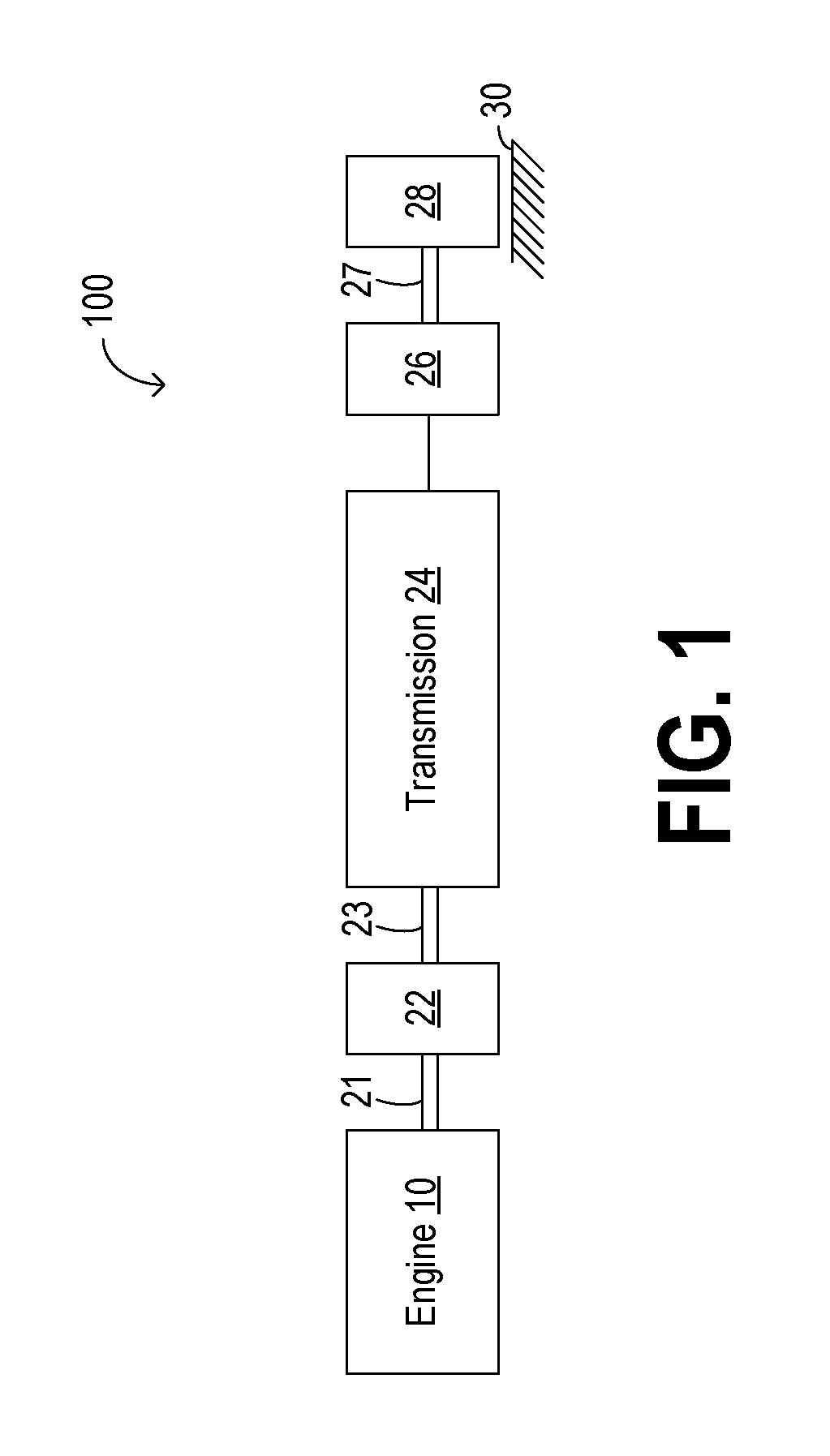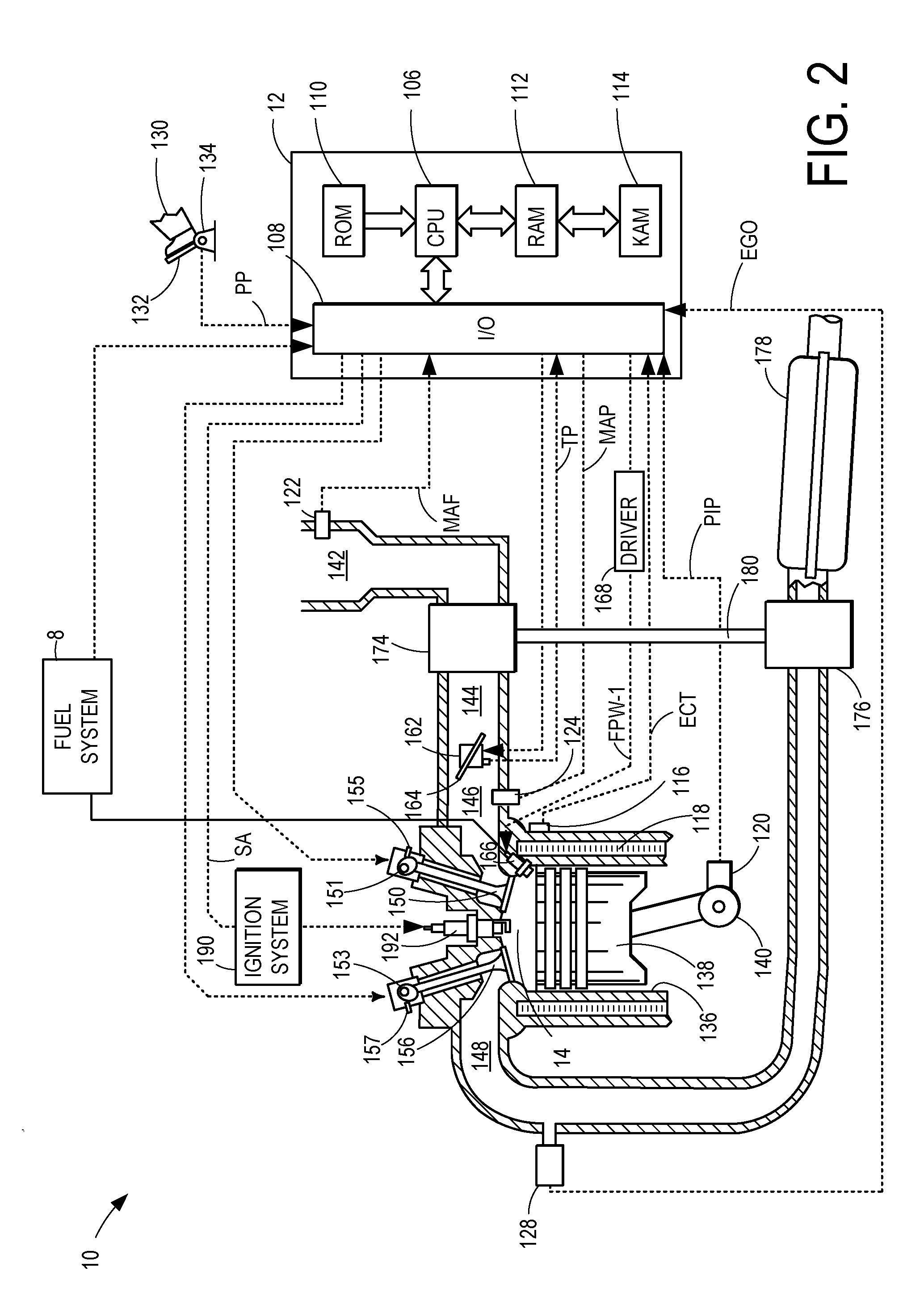Methods and systems for turbocharger control
a turbocharger and boost technology, applied in the direction of electric control, machine/engine, vehicle sub-unit features, etc., can solve the problems of reducing vehicle performance, reducing engine speed, and consequently turbocharger boost, etc., to achieve good driveability, reduce engine speed, and increase aircharge
- Summary
- Abstract
- Description
- Claims
- Application Information
AI Technical Summary
Benefits of technology
Problems solved by technology
Method used
Image
Examples
Embodiment Construction
[0012]The following description relates to systems and methods for adjusting engine operation during transmission gear shifts. Specifically, the method enables potential torque differences, arising due to engine speed changes during and / or after the gear shift, to be compensated for using a turbocharger. An engine controller may be configured to perform a control routine, such as the routine depicted in FIG. 3, following the prediction of an upcoming gear shift, to adjust the settings and schedule of a turbocharger boost during the gear shift. The turbocharger settings may be adjusted to match a predicted boost profile. As illustrated in FIG. 4, the turbocharger adjustments may be initiated before the gear shift commences and may continue during a transition period before the gear shift is completed. Further torque adjustments may be achieved by modulating the throttle. That is, the turbocharger settings may be adjusted to preposition the boost in anticipation of a desired boost lev...
PUM
 Login to View More
Login to View More Abstract
Description
Claims
Application Information
 Login to View More
Login to View More - R&D
- Intellectual Property
- Life Sciences
- Materials
- Tech Scout
- Unparalleled Data Quality
- Higher Quality Content
- 60% Fewer Hallucinations
Browse by: Latest US Patents, China's latest patents, Technical Efficacy Thesaurus, Application Domain, Technology Topic, Popular Technical Reports.
© 2025 PatSnap. All rights reserved.Legal|Privacy policy|Modern Slavery Act Transparency Statement|Sitemap|About US| Contact US: help@patsnap.com



